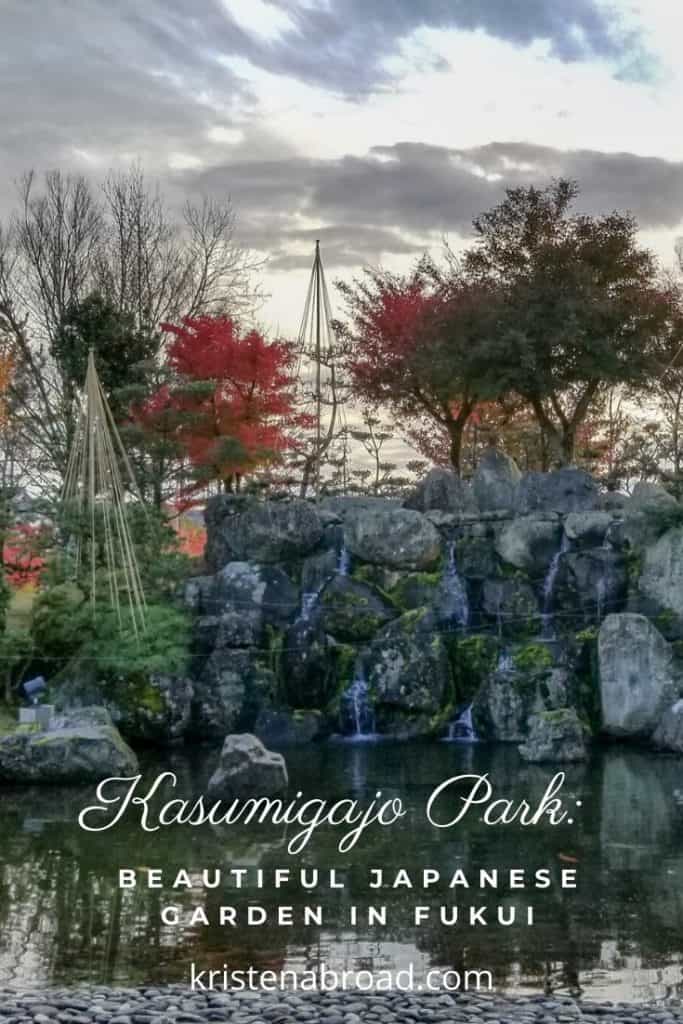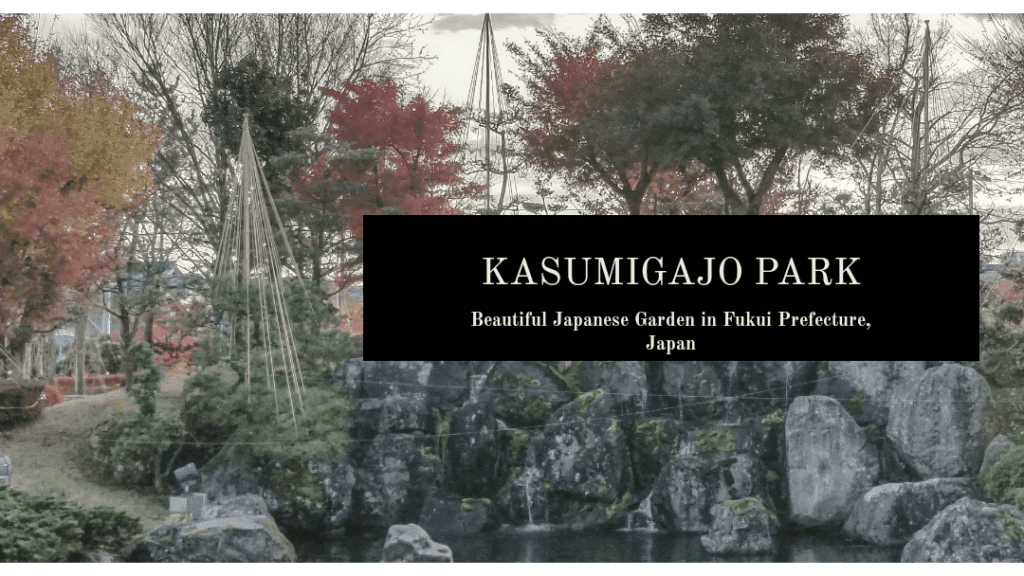Kasumigajo Park is located in the city of Sakai in Fukui Prefecture, Japan. Probably one of the lesser-known prefectures, but that doesn’t mean there’s not a reason to go visit! Located at the base of Maruoka Castle (丸岡城, it’s an easy day trip from Kyoto on the Limited Express Thunderbird. Three birds with one stone, Japanese Garden, one of the original castles and a liner ticked off your list!
[PS. Need help planning your Japan trip? Feel free to reach out to me for help!]
What’s in a name?
Kasumigajo Park was built in 1979 to commemorate the 400th anniversary of Maruoka Castle. Ignore for the time being that all the information for the castle claims that it was built in 1576 (claimed because there are three of the original 12 castles that all claim they are the oldest and this is one of them) and that math doesn’t work out. So why wasn’t it called Maruokajo Park? It is Maruoka Castle, after all (城,

There is a legend about Maruoka Castle that any time an enemy approaches, a wall of mist will appear out of nowhere and conceal it. Hence, it has a nickname of 霞ヶ城, かすみがじょう,
Pro Tip: Don’t let the name confuse you!
Nihonmatsu Castle in Fukushima (another of the hundred finest and one I’ll have to tell you about later) is also known as Kasumigajo. Damn Castles and their nicknames. Also? The park in Fukushima bears the same name. So if you are looking up directions (other than the ones I’ll give you below!), make sure you choose the correct one!
Japanese Garden Elements
Japan has a thing with having the “three best” of something. Kenrokuen (兼六園), in Kanazawa, Korakeun (後楽園) in Okayama and Kairakuen (後楽園) in Mito hold those titles.
Why am I talking about OTHER gardens? Well, to be considered a “true” garden, based on Chinese landscape theory there are six features that make an ideal garden. And these three all emphasize them perfectly.
- spaciousness
- seclusion
- artifice
- antiquity
- water
- panoramas
So back to Kasumigajo Park. It has one of the

One of the 100 Best Hanami: Maruoka Castle Hanami
Speaking of numbers, Japan also has a thing with “100 best” like the 100 finest castles that if you’ve been reading
This park and the castle are considered one of the 100 best cherry blossom viewing locations in Japan. There are 400 cherry blossom trees to enjoy, 300 of which are lit up between 6 and 10 pm at night to enjoy. The festival at Maruoka Castle usually runs for the first half of April, make it a priority if you are in Japan for Cherry Blossom season.
Getting to Kasumigajo Park
You are going to need a bus to get to Kasumigajo Park. It’s a bit far from the station in Fukui (40 min) and Awara Onsen stations (20 min) on the JR Hokuriku Main Line.
Don’t let the bus system intimidate you (I know it did for me at first!), catch the Keifuku Bus bound for Maruoka Castle (丸岡城).
Disclosure: Kristenabroad.com is a participant in the Amazon Services LLC Associates Program and other affiliate programs. For some links to products or services in this article, I may earn a small commission by you using my link. The price for you is not affected.

Things to do nearby
First off, definitely visit Maraoka Castle! It’s one of the 12 remaining original castles of Japan.
Fukui is famous for their soba with different “varietals” of buckwheat in various regions. In fact, most of the prefecture’s soba is harvested in Sakai! Try Maruoka’s and compare it to some of the others, like Awara if you went with that option for travel!
While we’re speaking about food, Fukui is also where Koshihikari rice was invented. Koshihikari is the “premium” of all Japan If you like rice, this is where you should get it!
Another thing Fukui is known for is it’s Echizen Bamboo dolls. You can see the fine work of craftsman (or 職人, shokunin) at the 越前竹人形の里 (えちぜんたけにんぎょうのさと, Echizen Bamboo Doll Village).
Pin this for later


Oh my goodness – so beautiful. Japanese landscaping is something I have admired for years. I can’t wait to go to Japan and see all these parks!
I can’t wait to hear about it when you do!! I wish I had a better green thumb every time I go but I love them none the less!